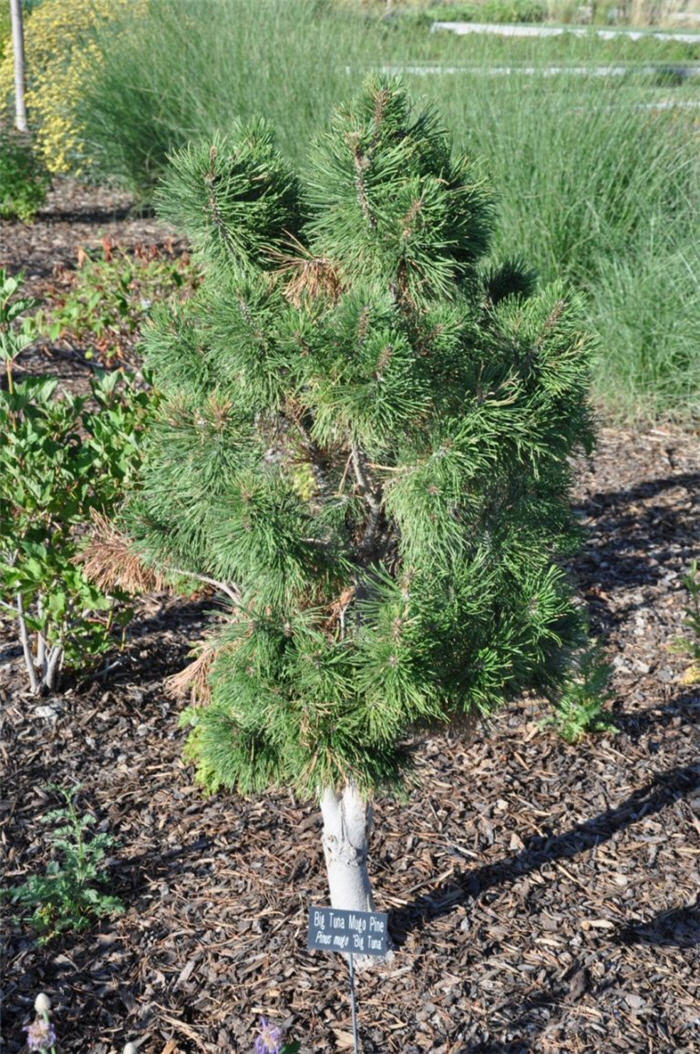| Botanical Name: Pinus mugo 'Big Tuna' | |
| Common Name: Big Tuna Mugo Pine |

-
Anatomy
-
Culture
-
Design
Plant Type
Conifer, Shrub
Height Range
6-12'
Flower Color
n/a
Flower Season
n/a
Leaf Color
Dark Green
Bark Color
Grey
Fruit Color
Brown
Fruit Season
Intermittent
Sun
Full, Half
Water
Low
Growth Rate
Slow
Soil Type
Sandy, Clay, Loam, Rocky, Unparticular
Soil Condition
Average, Rich, Poor, Well-drained, Dry
Soil pH
Neutral, Basic
Adverse Factors
n/a
Design Styles
Formal, Japanese, Mediterranean, Ranch, Spanish, Woodland
Accenting Features
Specimen, Unusual Shape
Seasonal Interest
Winter, Spring, Summer, Fall
Location Uses
Entry, Perennial Border, Shrub Border, Foundation, Patio, Raised Planter, Walls / Fences
Special Uses
Container, Hedge, Screen, Small Spaces
Attracts Wildlife
Birds
Information by: Stephanie Duer
Photographer:
Photographer:
-
Description
-
Notes
A rugged and hardy multi-stemmed pine with dense dark green foliage. 'Big Tuna' is compact, but not a dwarf, and grows slowly to about 6 to 8 feet tall and 4 to 6 feet wide, with an upright, though bushy habit. Useful as a hedge or screen, or used as an accent plant. Buds are showy during cold winter months and stand out distinctly against dark green foliage. Evergreen. This may be the best plant name out there, and is worth growing just to have 'Big Tuna' in the landscape.
Grow in full sun in well drained soil. Useful in shrub borders and mass plantings. Growth is slow, generally, and size varies. See guide for tips on pruning evergreens. Candle length is a good indicator of the rate of growth and the ultimate size of a mugo pine, which is handy as there is a great deal of variation in character within the species.